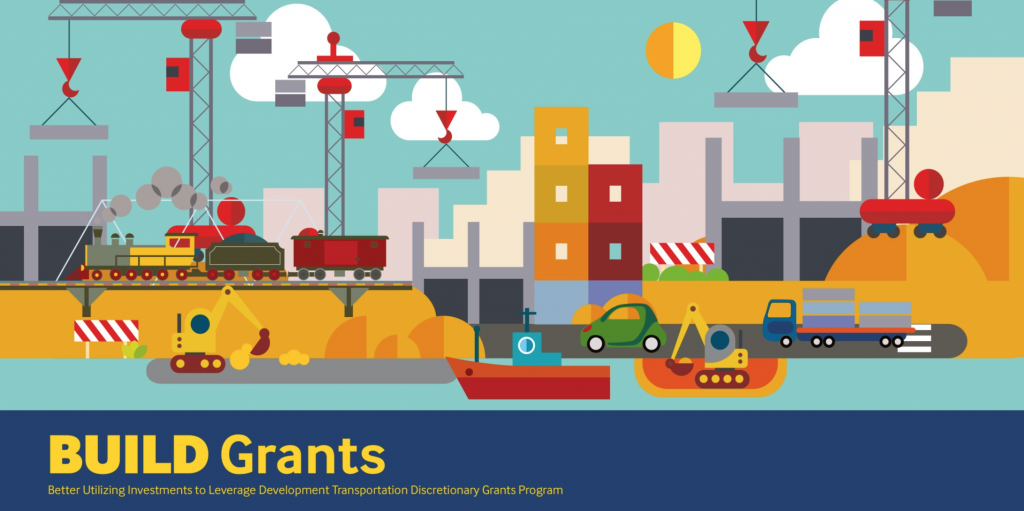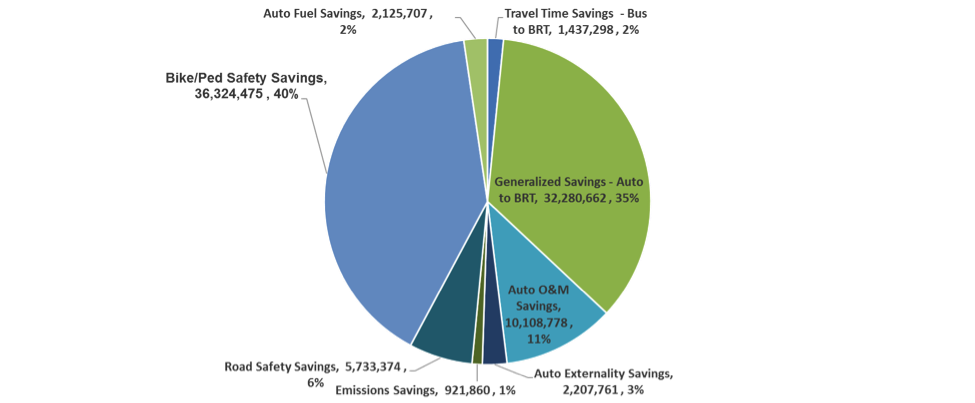Leveling the playing field: How T4America uses benefit-cost analyses to support multi-modal transportation projects.

As with its predecessor (TIGER), the BUILD competitive grant program requires applicants to include a benefit-cost analysis (BCA) for their project to be considered for an award from the now $1.5 billion program. This post explores what BCAs are, how can they help multi-modal transportation projects compete more effectively on their merits, and how Transportation for America’s (T4America) Technical Assistance program is helping applicants prepare a BCA that accounts for their smart growth principles.
T4America often supports great, locally driven transportation solutions through our Technical Assistance program, launched in 2015. We put our policy, program, and project development expertise to work at the federal, state, and local levels. To help show how T4America can help you make a merit-based case for your multimodal transportation project, we’re going to walk through a BCA we conducted on behalf of Oklahoma City’s transit agency last year.
Developing BCAs is just one of the services that our Technical Assistance team can provide. If you want to know how T4A can help you prepare a BCA for your BUILD project email us for more information.
What is a benefit-cost analysis?
A benefit-cost analysis is a formalized way of comparing a project’s costs against its benefits over a long period of time, typically 30 years for transportation projects.
USDOT requires applicants to include a BCA in all BUILD applications, the specifics of which have not generally changed over the nine rounds of competitively awarded funds, beyond small adjustments to factors like the value of time or the current administration’s removal of greenhouse gas emissions as a benefit.
Costs
BCA costs typically include any capital, operating, or major rehabilitation costs.
When T4Amercia worked with the Central Oklahoma Public Transportation Authority (COPTA) to compare the costs of their proposed nine-mile BRT system to the benefits for a TIGER application, T4Amercia started by looking at three types of costs: up-front capital costs of $20.9 million; the stream of operations & maintenance costs of $35.8 million, which included bus repairs, street repairs to the BRT lanes, and routine maintenance; and major rehabilitation and bus purchases of $4.8 million.
One important part of a BCA to highlight is the concept of residual value, especially for capital projects that have long life cycles exceeding the typical 30-year analysis period. Residual value is the monetary value of your project after the 30-year period has been exceeded and can be counted as a benefit. In the case of the Oklahoma City BRT project, we estimated its residual value to be $935,000.
After combining the costs and crediting back the residual value, we estimated the total cost of the Oklahoma City BRT project to be $60.6 million.
Benefits
One advancement in our understanding of how to level the playing field between traditional and multi-modal transportation projects has come through the BCA’s benefits section. For example, a transit project like Oklahoma City’s BRT can create benefits in several non-traditional yet measurable ways, both broadly and specific to this project.
Broadly, we can estimate that it reduces travel time for existing users of transit as well as for those who switch to transit from single-occupancy vehicles. There are also societal benefits from a reduction in pollutants (other than greenhouse gases) and improved roadway safety that can also be estimated and accounted for. In the case of Oklahoma City’s BRT project, much of the savings we identified are tied to people switching trips from single-occupancy vehicles to the BRT system. This includes factors like the estimated economic benefits of someone’s willingness to pay a fare, the perceived in-vehicle savings, reductions in fuel use and auto operating and maintenance costs. Additionally, we captured the benefit of avoided negative externalities like roadway wear and tear, emissions, and reductions in auto crashes, injuries, and fatalities associated with reduced auto usage.
Finally, each project will have highly specific benefits that reflect the unique nature of individual infrastructure projects. In the case of Oklahoma City’s BCA, substantial intersection safety improvements would be made as part of the construction of the BRT lanes, so we included them. By reducing fatalities and injuries from crashes at these intersections, the BRT project would add an additional $36 million in benefits.

Why your BCA matters
One reason that T4America continues to support the TIGER and now the BUILD program is that local communities are clamoring to build different kinds of transportation projects and the federal transportation programs aren’t set up to accommodate these new projects.
If we want to achieve today’s recipe for successful economic development, we need to think outside of the traditional federal funding siloes and build more places in which people want to live and work, and improve access to opportunity. That requires more investment in multimodal projects including transit, sidewalks, and other infrastructure that can improve safety for everyone.
Benefit-cost analyses are a valuable tool to quantify and evaluate the benefits that come from improved safety for people walking or biking, reduced emissions, and land development projects. BCAs help put transit and other multimodal projects on equal footing with auto-focused projects by demonstrating their value to public.
T4America can help you understand how a benefit-cost analysis would work for your project and can help you write one. If you’re interested in learning more about this and our other technical assistance offerings, you can contact us here.



















